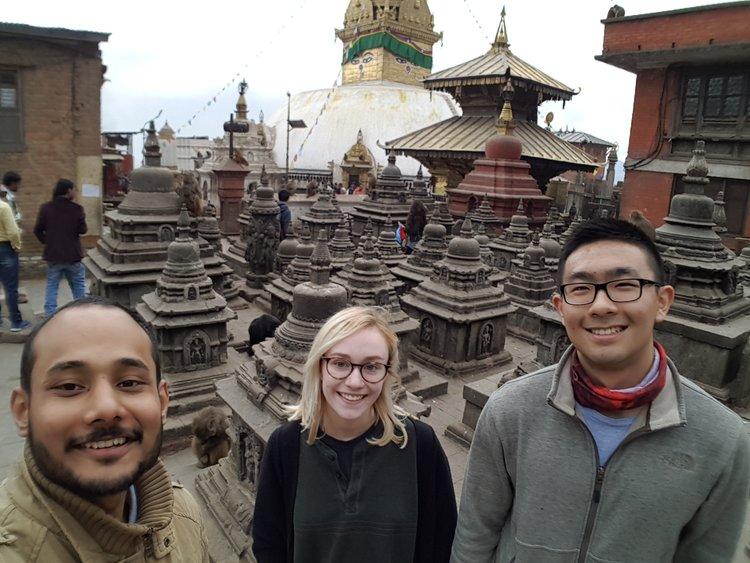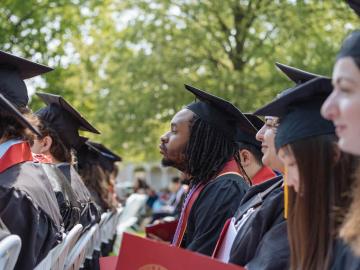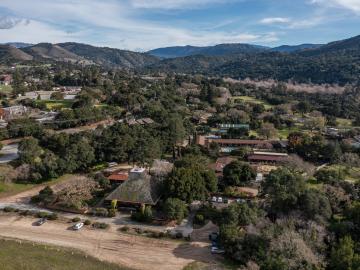Building Solidarity with Youth in Nepal
March 1, 2017
Amanda Nagy

When researching colleges and universities in the United States, Bikalpa Baniya was drawn to Oberlin because he saw a lot of opportunities to engage in service projects on a local and global scale.
“I’m the kind of person who likes to do stuff. I don’t get a lot out of classrooms,” says Baniya, a Bonner Scholar and second-year economics major from Kathmandu, Nepal. “I knew this was the place for me.”
The choice was easy, but the transition was not. “Everything here is different. I can’t think of a single similarity. When I first got here, I hadn’t spoken English to this extent. My accent was really thick. I had to learn how friendships work.”
In the spring before Baniya came to Oberlin, he was making plans as a newly accepted student and anticipating his future abroad. Then the massive earthquake hit Nepal on April 25, 2015. He was at home in Kathmandu when the earthquake happened, but the worst destruction was felt further outward in the rural villages.
Since the moment he arrived on campus, he knew he wanted to go back to help the hardest hit areas. He has committed to working on efforts that help impoverished communities in Nepal.
In January 2016, he returned with a Shansi In-Asia winter term grant. He went to the most severely affected area—a remote village in the rural Sindhupalchowk District—which suffered the highest death toll and the most damage, with about 95 percent of its homes destroyed. The journey from Kathmandu took five hours by bus and another two hours by foot.
“During that walk, I did not see a single house standing. People were living in temporary huts. There are a lot of farmers, but the water dried up, which was a huge concern. People were dying from the cold.”
He volunteered and tutored in the village’s public school, even going to children’s homes to tutor and help them return to school.
“These kids, after all they’ve gone through, they still want to learn and be something. Every parent I met, they wanted their kids to go to school, because job prospects will be better. But they don’t have the resources to support them.”
The experience was certainly eye-opening, and Baniya knew he wanted to do more meaningful work with education in Nepal’s villages—but he couldn’t do it alone. “The problem was, I’m a college student halfway around the world, I didn’t have enough time. I needed a structure, a team back in Nepal.”
He had been following the progress of Maya Universe Academy, an innovative educational model in Nepal’s Tanahun District. It is the first and only private school in the region providing high-quality, cost-free education. Maya started in 2011 with the goal of enrolling 10 students. More than 200 families showed up for enrollment, and the academy has quickly grown to 400 students in three schools. The founder, Manjil Rana, quit his studies in the U.S. and returned to Nepal to be a school teacher after the country’s 2006 uprising and democratization.
“I reached out to them and asked if I could volunteer. I went there, and I was struck by the dedication and the sacrifice people had to give to establish this school. It was basically a tent in the beginning. The founder gave up his life to start this, and volunteers quit their jobs to help. It’s the first case where I saw education done right. It’s not just classes, but the way students are taught to speak up, be organized, and be diplomatic. Their vision is, they want these kids to grow up to study abroad, but unlike most people, come back.”
Baniya wants Oberlin to maintain solidarity with Nepal through his organization, Students United for Nepal. For his 2017 winter term project, Baniya recruited first-years Kristen Mayhew and Charles Cui to accompany him on a monthlong residency at Maya Universe Academy. They were among 18 who expressed interest and interviewed for the opportunity. Before the trip, he raised $7,000 in donations from businesses and individuals all over Oberlin. The money he raised is funding the construction of classrooms to meet the needs of growing enrollment.
When Mayhew attended Baniya’s information session, it was clear that she would have a chance to do meaningful service while also having a once-in-a-lifetime experience.
“I was really looking for something that I would never have the chance to try if I weren’t at Oberlin,” says Mayhew, an intended anthropology and creative writing major from Darien, Connecticut.
As a volunteer teacher, she taught a creative writing workshop to the sixth-grade class. In her workshop, the students crafted their first typed and edited short stories.
“I taught the basic diagram of a story and technical things such as metaphors, similes, and dialogue. I spent a lot of the class time going around to each student and reading their stories, bouncing around ideas with the kids so they could move forward in their stories. Once the stories were all finished, they decided they would bind them into a book and use the book to help teach English to younger students at all three of Maya’s locations.”
When she wasn’t in class, Mayhew worked in the school’s farms each day.
“Every afternoon I spent with the agriculture team was different. Some days I just carried buckets of water from the tap to the tank that watered the crops, while other days I spent digging holes, harvesting crops, or carrying manure up the hill from the chicken coop. It was hard work in the brutal afternoon sun, but it was worthwhile. I spent those afternoons building good relationships with fellow volunteers and Nepali natives.”
Mayhew was impressed with the quality of education at Maya. To pay for tuition, parents work in the school’s agriculture or construction two days a month. The school generates income by raising and selling its free-range chickens to restaurants and supermarkets in the cities.
“The school is an amazing place. It does so many things well,” Mayhew says. “No child is ever left behind or allowed to fall through the cracks because there is always someone there to make sure they feel supported.”
Cui, an intended math and computer science double major from Beijing, taught a course called Logic and Paradox, as well as a Chinese language class. “The students at Maya are very enthusiastic about studying and learning about volunteers and their life back home,” says Cui. “The school needs support with construction, such as building new classrooms, getting more lights, and Internet access.”
The three took some time to visit other places throughout Nepal. In Kathmandu, they visited world heritage sites, museums, and temples, and hiked to a monastery. In Pokhara, they went paragliding, and at the end of their trip, they went on a safari and rode an elephant at Chitwan National Park.
Mayhew says the adjustment to village life wasn’t difficult when she embraced it as a way of life.
“Some might say that life in Nepal is just hard compared to life in the U.S., but once you accept that it’s simply how things are done, it’s easy to acclimate. In the U.S. I’m used to having a running tap with clean water, but in Nepal the only place to get clean water was about a half mile walk from where I slept. Sometimes those types of differences seemed like difficulties, but once I reminded myself that it’s not an inconvenience, it’s just life, I was able to feel at home.”
Baniya is planning to return with more Oberlin students in summer 2017. He will also continue to do more fundraising for projects at the school.
“I want to help education in Nepal. The villages have hooked me,” Baniya says. “The people there are so friendly and welcoming. In the villages, the most important thing is personal connections. I want to be with them and help in whatever way I can.”
Tags:
You may also like…
Making a Difference with Business
December 10, 2024
Omukoko Okoth ’25 chose Oberlin College for its values and opportunities, and in order to take advantage of all that Oberlin has to offer, he decided to participate in the business integrative concentration.
Global and Local Changemakers to be Honored at this Year’s Commencement
May 20, 2024
A physician who works to advance HIV and AIDS research and treatment; a couple dedicated to serving the Oberlin community; and a cofounder of the college’s first co-op will all be honored during this year’s Commencement exercises.
Oberlin Musicians Collaborate at California’s Hidden Valley Institute
February 1, 2024
Winter Term projects culminate in performances involving TIMARA, dance, chamber music, and jazz.


